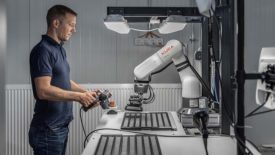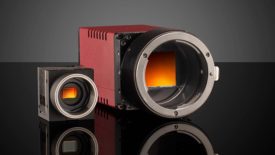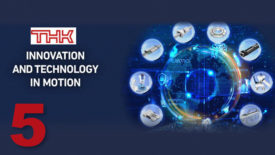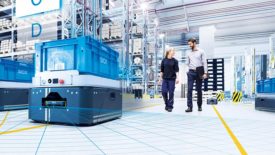Home » Keywords: » robotics integration
Items Tagged with 'robotics integration'
ARTICLES
Vision & Sensors | Automation
Many manufacturers miss out on automation’s potential for improving quality. To achieve these gains, quality must be prioritized from the business case to sourcing and implementation.
Read More
Vision & Sensors | Machine Vision 101
The Future of Robotics: From Science Fiction to Industry Redefining Technology
Autonomous systems, collaborative robots, AI-driven robotics applications and sustainable robotics are shaping a new era of automation and human-robot interaction.
November 20, 2024
Vision & Sensors | Cobots
Collaborative Robots Emerge as Viable Automation Options for SMEs
Benefits and key steps for a successful system design and installation
August 14, 2024
Case Study
Creative Cobot Use Simplifies Product Testing
As the technology has progressed, many companies have discovered ways to reap the benefits of modern cobots beyond manufacturing and assembly operations.
June 25, 2024
Case Study
Remote Robot Monitoring & Control Slashes Downtime Costs
A new approach to remote robot monitoring and error recovery helps companies restart production faster in cases of unplanned robot downtime.
June 20, 2024
Quality in Automation | Robotics
Advanced Automation Delivers the Ultimate in Quality Control
When considering the type of robot for automating inspection tasks, cobots are often the initial go-to solution.
March 29, 2024
Vision & Sensors | Sensors
New Sensors and Machine Vision Applications Drive Advances in Optics
New opportunities continually emerge — including in the field of robotics and autonomous machines.
May 22, 2023
Management | Leadership Survey
2023 Quality Leadership Ranking: #5 THK America Inc.
February 1, 2023
NDT Trends
Nondestructive Testing (NDT) Trends
Manual means of performing NDT and human evaluation of the results is trending more and more to automated, digitized and artificial intelligence interpretation of the results whenever economically possible.
October 10, 2022
Vision & Sensors | Machine Vision 101
The Use Of Machine Vision For Robot Guidance Offers New Possibilities
Effective robot guidance requires specific machine vision sensors and techniques.
July 6, 2022
Stay in the know with Quality’s comprehensive coverage of
the manufacturing and metrology industries.
eNewsletter | Website | eMagazine
JOIN TODAY!Copyright ©2025. All Rights Reserved BNP Media.
Design, CMS, Hosting & Web Development :: ePublishing











